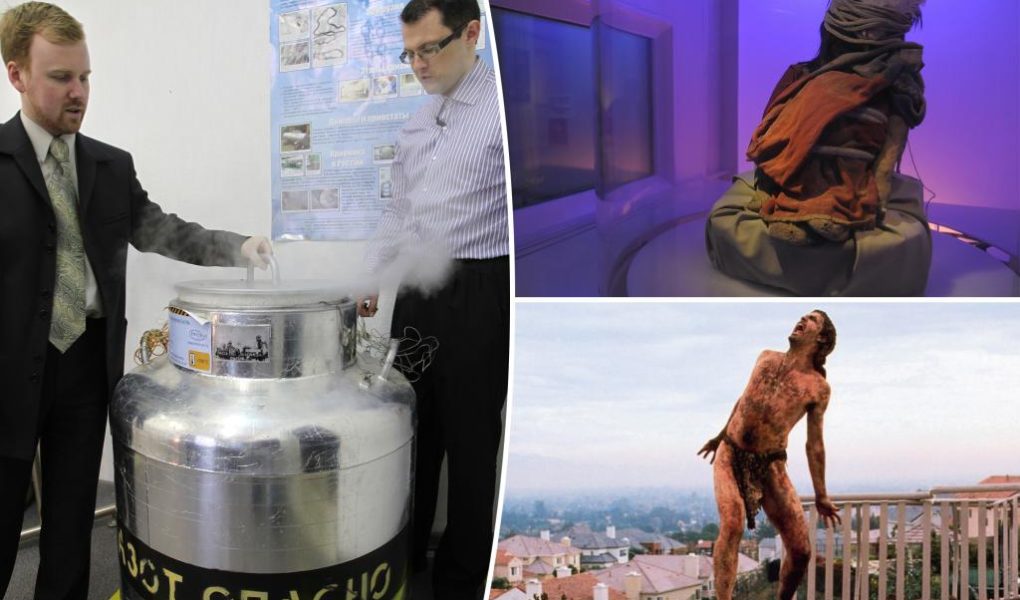Global worming?
Scientists recently revived microscopic creatures frozen for 46,000 years in the Siberian permafrost.
The ancient nematodes, better known as roundworms, are able to shut their bodies down in unsuitable environments — a process called anabiosis.
After discovering them in a frozen squirrel burrow in 2018, scientists simply put the worms in water to awake them of their shut-down state.
When asked if humans frozen in time could be resurrected by similar means, one cryonics expert pointed out the differences in cryopreservation of humans and animals — but said technology may pave the way for “Encino Man” to make his triumphant return in 50-70 years.



“I don’t think that human metabolism can be radically restructured so that we also go into anabiosis like animals. It’s probably easier to create new, artificial bodies,” Valeriya Udalova — CEO of KrioRus, a Russian cryogenics company that claims to hold 94 frozen corpses at its base in the country’s capital — told MailOnline in a new interview.
Udalova noted worms aren’t the only species that can go through anabiosis, as the process extends to frogs and Siberian anglerfish.
But humans, she says, don’t have the same capabilities.
At KrioRus, surgeons drain humans of blood before connecting them to a new circulatory machine filled with “cryoprotectant solutions” to protect cells and tissues.
Deep-freezing procedures ideally begin within just minutes of someone being declared legally dead.
Bodies are frozen to 321°F.


Udalova explained that for humans to be resurrected, there would have to be major strides in medicine as well as tissue engineering — something she thinks could happen in 50-70 years.
“Cryobiological laboratories are few, there are no large ones at all,” she explained. “Even the famous laboratory ‘XXI Century Medicine’ is a small organization.”
She continued: “But even in such a deplorable situation, remarkable experiments have already been made, for example, on reversible cryopreservation of a rat kidney using gas persufflation with nanoparticles and induction heating.”
Current technology is insufficient since cryoprotectant agents have “toxic” effects on the brain and body parts, according to Dr. João Pedro de Magalhães, a Portuguese microbiologist.
“It will take huge scientific advances in areas like tissue engineering and regenerative medicine to make cryopreserved individuals alive and healthy again,” de Magalhães told Gizmodo in 2018.
But if successful, the process could be an “alternative to death.”
“Patients with terminal diseases, including children, could opt to be placed on cryostasis until a cure were discovered,” he explained.
“In a sense, we would have an alternative to death, which has profound philosophical, ethical and medical implications.”
𝗖𝗿𝗲𝗱𝗶𝘁𝘀, 𝗖𝗼𝗽𝘆𝗿𝗶𝗴𝗵𝘁 & 𝗖𝗼𝘂𝗿𝘁𝗲𝘀𝘆: nypost.com
𝗙𝗼𝗿 𝗮𝗻𝘆 𝗰𝗼𝗺𝗽𝗹𝗮𝗶𝗻𝘁𝘀 𝗿𝗲𝗴𝗮𝗿𝗱𝗶𝗻𝗴 𝗗𝗠𝗖𝗔,
𝗣𝗹𝗲𝗮𝘀𝗲 𝘀𝗲𝗻𝗱 𝘂𝘀 𝗮𝗻 𝗲𝗺𝗮𝗶𝗹 𝗮𝘁 dmca@enspirers.com




